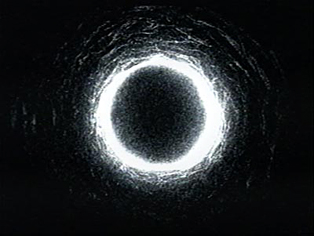Introduction
Trinitron, Black Matrix, 36% Transmission (black) glass... In 40 years (1964-2004) the TV had relatively few new technologies that were native to the set that stuck. Of course, there was the VCR and Home Theater, which were literally outside of the box that had tremendous impact. But there was also blue glass, picture in picture, and numerous other must have features that came and went.
Since 2004 and the near simultaneous introduction of HDTV (encapsulating both digital broadcast, aspect ratio change and resolution increase)and flat panels there have been a number of continuing developments. A few of them are discussed here:
Mobile TV/Video
Originally introduced in low resolution formats, resolutions have been increasing as the number of pixels on mobile devices have grown. The capability now equals or exceeds the HDTV in your living room. Video response speed have also increased so that the golf balls don't disappear when they are in flight. However, the big challenge remains sunlight response. How many commercials have I seen of people enjoying their mobile device in bright sunlight when, in fact, the screen would be completely washed out by the sun. An invention or a new approach is needed.
OLED
OLED, or Organic Light Emitting Diode, may be one answer. OLED technology has been the display technology of the future since FEDs (filed emmision displays) proved a failure. FEDs were originally supposed to give better energy efficiency and improved (CRT-like) viewing than LCDs. However, during the long development cycle, LCDs got better to the point where there was no longer any point to FED technology. OLEDs offer, potentially, better overall viewing characteristics, better energy efficiency, and potentially lower costs as they can be printed on flexible substrates and made in highly efficient roll-to-roll manufacturing. However OLED has been plagued by LCD technology's 40 year head start; the lack of an industry infrastructure to support OLED manufacturing, continuing improvements in LCDs, and a life issue where the colors age differently and produces color shifts as the OLEDs age.
However, the flexible and less breakable OLED has survived and has been implemented in some mobile devices where energy efficiency and break resistance are important. Large TV manufactures are now introducing OLED TVs. The new TVs are coming in at high price points and the success of the technology will depend on riding down the manufacturing cost curve.
LED TV
At one point, one of the larger US electronics companies spent years and huge sums of money developing LED technology to make televisions. That effort failed. But it did help to generate new technologies that are rapidly growing today. LED signs, the big video signs that you see on buildings or billboards, are the manifestation of the original LED effort. LEDs have yet to get small enough to produce resolutions appropriate for a home TV; but if you are making something really big, like a large digital billboard, they are now the technology of choice.
In addition to the signage application, LED technology has revolutionized the lighting industry. They are solid-state and have the advantage that they are not susceptible to shake and impact as light bulbs are. They also have the advantage of being a semiconductor, manufactured in semiconductor processes. This, in itself, has two advantages. First, they are on a semiconductor cost reduction curve rather than a standard cost down curve.
This can drive as much as a 29% per year cost reduction vs. an 18% year reduction that would be available with even the best mechanical part cost reduction. Second, this also implies rapid performance improvement as LEDs are now more efficient than conventional light bulbs.
The continued improvement in LED technology has had its effect on the display industry, though not the product that was originally intended. LCD technology is essentially an elaborate light filter that takes white light and convert it to the image desired. The white light, until LED TV was universally supplied by very thin florescent tubes in the back of the LCD. LED TV is a conventional LCD with the florescent tube replaced by LEDs. In some cases the LEDs are on the edge of the LCD and in some cases they are spread behind the LCD. With the change of light source from one (or a very few) florescent tubes to multiple LEDs, the LCD performance has been further improved by the implementation of
local dimming. Rather than metering the light solely with the LCD, the light sources in the dark regions of the image are dimmed as well. This both increases energy efficiency and improves contrast.
3D TV
3D TV produces a 3D image by giving one eye a different view of the image than the other. Since there is only one screen, this is accomplished by glasses that aid in filtering the image each eye sees. There are two major types of 3DTV, active glasses type and passive glasses type. The active glasses type actively switch the lenses from transmitting the TV image to blocking (one lens is transmitting while the other is blocking). The passive glasses type rely on the polarization of the LCD light to give different images to each eye.
Auto-stereoscopic (glasses free) 3D TV
For those of us that wear glasses all of the time, wearing glasses to watch 3D TV is not much of an issue. However, for many, it is uncomfortable and the glasses can also be expensive. Further, if the flat panel is being used as a digital sign, where passers-by will not have on 3DTV glasses, #D becomes much more problematic. Consequently, there has been much attention paid to auto-stereoscopic or glasses-free 3D. I have seen many examples that mostly rely on lens stripes on the screen. The lens stripes (lenticular lenses) tend to work only if the viewer is standing in a particular location or one of several locations that align with the lenses. This in not a solution that generally works well and an invention is needed to make this technology real.
Connected TV
Connected TV has been around in some sense since the 26" CRT was introduced. The 26" was a flat square version of the 25" that was designed to be more suitable as both a TV and a computer monitor. Today, of course, if you have a game or DVD connected to your TV then your TV can access internet content.
Smart TV
Smart TV is a step beyond (a big step) connected TV in that there is more intelligence built into the TV. It can recognize who is watching, remember your favorite shows, even suggest TV content that you will probably like given your viewing habits. Smart TV is the migration of the TV from being just the display in a home entertainment system back to being the central platform of an intelligent house.
Quad Resolution (4K) HDTV
When HDTV was first conceived, the resolution was much higher than the then standard NTSC television signal and rivaled standard computer resolutions. Of course, computer resolutions have grown since then as has LCD production capability. As stated above, even some mobile devices now have more resolution than your HDTV. In that sense quad resolution is TV catching up.
Cinema Wide TV
Although HDTV is made in a 16:9 format (the screen is 16/9 times as wide as it is high), movies are commonly made in much wider formats. The original TV was in a 4: 3 format, almost square. If you recall the movie "The Graduate", in the most famous scene in the movie Anne Bankroft undresses in front of Dustin Hoffman. You can not see that scene on a 4:3 screen because Anne Bankroft and Dustin Hoffman are at opposite ends of the screen as it would be shown in a theater. The move to 16:9 makes some improvement. However the 16:9 aspect ratio was something of a compromise as it was square enough that CRTs could be made with that aspect ratio. (There is a fixed ratio between the depth of a CRT and its width, the wider it is the deeper it is. Ratios wider than 16:9 were impractical for CRT manufacture, as even 16:9 proved to be.) Since the CRT has passed into history, there is not much utility limiting televisions to the HDTV standard. Although all content made for broadcast is in 16:9 format, enjoying a movie without leterboxing or having the edges cut off is now possible.
Norm























